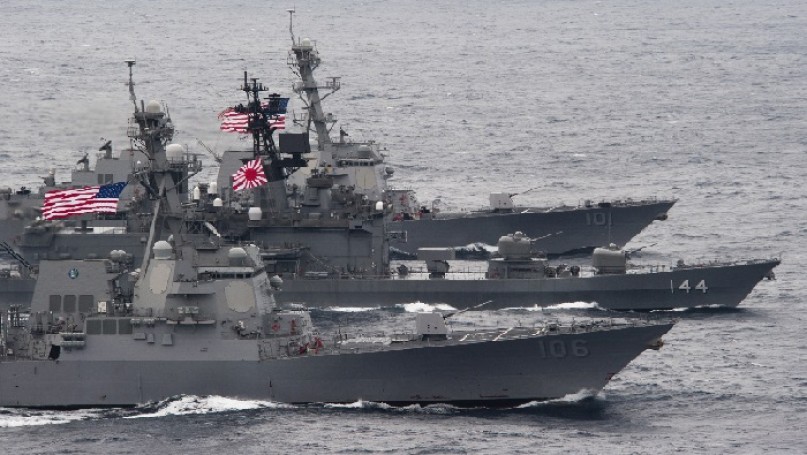
Bridging Troubled Waters: China, Japan, and the Maritime Order in the East China Sea
by James Manicom
Georgetown University Press, 2014
In his book Bridging Troubled Waters, James Manicom questions the conventional wisdom that conflict is likely in the East China Sea and argues convincingly that China and Japan have repeatedly managed to avoid conflict and cooperate on a series of maritime issues.
The East China Sea dispute is traditionally discussed as the most contentious maritime security flashpoint in East Asia. The hope of former Chinese leader Deng Xiaoping that a future generation would be able to resolve the matter has been left unrealized. The strategic and economic importance of this maritime space continues to be matched by its symbolic significance to China and Japan. A new cycle of escalation started in 2012 with the nationalization of the Senkaku/Diaoyu Islands by the Japanese government and later with the establishment of a Chinese Air Defense Identification Zone (ADIZ) over most of the East China Sea in November 2013. The result is that Chinese and Japanese navies, coast guards and air forces face each other in a defined geographical area.
Despite this ongoing level of tension, Manicom examines in great detail the origins, depth, and durability of four different bilateral processes to respectively reduce tension over the Senkaku/Diaoyu Islands, promote reciprocal cooperation on fisheries, coordinate marine research activities, and jointly develop hydrocarbon resources in the East China Sea. China and Japan made the most significant progress on joint fisheries management when they agreed to a bilateral fisheries agreement in November 1997. They also took a step in the right direction in June 2008 when they reached an ‘in-principle consensus’ on joint development of gas deposits in an initial block in the East China Sea. Disagreements quickly appeared, however, and the 2008 agreement has still not been implemented. Manicom demonstrates that cooperation is more likely to succeed when it derives from a long process of consultation and when Japan perceives that the rise of China as a maritime power constitutes a challenge to the status quo in the East China Sea.
The book makes a significant contribution to the scholarly and policy debates as its focus on the cooperative dynamics of the East China Sea dispute fills an important gap in our understanding of the conflict and may ultimately contribute to a peaceful management of the situation. The book introduces a sophisticated conceptual model referred to as a Maritime Value Matrix (MVM) based on a combination of material and ideational factors. The author conceptualizes the value of disputed space and designs a spectrum of cooperation. Adopting the model, the empirical chapters offer a fine account of domestic politics and policy formulation and explain how material and ideational factors have influenced Japan and China in their decision to cooperate in the East China Sea.
The book is based on excellent scholarship and solid research. The analysis is full of insights and relevant illustrations. It is also well written and structured. Some shortcomings should be mentioned, however. First, the MVM is discussed at length in chapter one and is consistently applied throughout the different case studies. Yet it is barely mentioned in the final part of the book. The conceptual discussion could therefore have been further elaborated and deepened based on the empirical findings. Second, the book offers an in-depth study of Japan’s ocean policy and strategic posture in the East China Sea while China is at times covered more superficially. This may well be the result of fewer available Chinese sources. Finally, the book could have focused more on external parties to the conflict and whether they contribute to or undermine maritime cooperation. In particular, the US-Japan bilateral security treaty covers the disputed islands in the East China Sea but Washington has preserved its neutrality over the sovereignty dispute by taking no sides on the legal validity of the respective territorial claims. Beijing has traditionally been angered by the American position.
Irrespective of these limitations, Manicom challenges some standard assumptions regarding the East China Sea dispute and demonstrates that China and Japan are capable of managing tensions and sustaining maritime cooperation. He reminds us that with sufficient political leadership in Beijing and Tokyo to address the material and ideational factors that drive the conflict, the dispute over the East China Sea may be calmed. The book should therefore appeal to anyone interested in East Asian maritime security and Sino-Japanese relations.